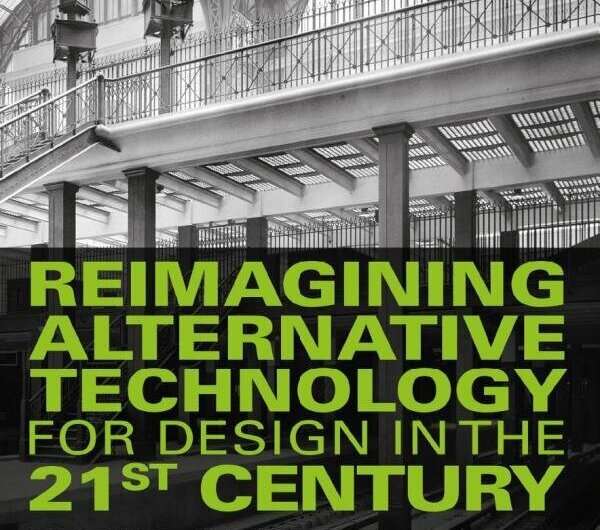This article has been reviewed according to Science X's editorial process and policies. Editors have highlighted the following attributes while ensuring the content's credibility:
fact-checked
trusted source
proofread
Can reimagining old technology help build a more sustainable future?

An industrial designer has suggested that old technologies could make a comeback for a more sustainable future—such as wind-up shavers, pedal-powered tools and manual lawn mowers.
In his new book, "Re-Imagining Alternative Technology," Brook S Kennedy envisions an innovative revival of underused and abandoned ideas, alongside new creative ones, to tackle global challenges such as climate change, natural resource management and pollution.
"With the global challenge of climate change, managing finite natural resources and pollution, everyone is focused on the biggest and most energy-hungry technologies. I'm suggesting that smaller, cumulative changes in our everyday lives could make a huge difference," Kennedy explains.
"Rather than starting from scratch and face looking at an impossible task, I am suggesting design could focus on 'modernizing' technology we already know works. With some updating and refinement to aesthetics, performance and usability, these technologies could easily be brought back into re-use."
Re-imagining nostalgic technologies
Kennedy is an award-winning industrial designer and Associate Professor in the School of Architecture, Arts and Design at Virginia Polytechnic Institute and State University (Virginia Tech).
There his research focuses on topics in sustainable design and materials, appropriate technology, and biodesign.
Some of the nostalgic technologies he believes could make a valuable comeback include passive wind-harnessing cooling systems and human-assisted powered tools and appliances, and reusable, repairable durable goods that have become disposable in today's context.
He also makes the case for "reimagining" other domestic appliances including examples like manual carpet-sweepers and water collectors, as well as advocating for a return to reusable, durable products such as razors you can sharpen and shoe soles you can re-sole and repair.
As well as looking to the past for inspiration, Kennedy also looks at warmer climates to see if we can learn from other cultures.
He explains, "If many of these so-called forgotten alternative technologies are still common and in use mainly outside the United States, why can't we make some changes and apply them here?"
He suggests Persian wind catchers could be used as a passive and low-energy house-cooling technique, and fog-catchers like those used in Chile and Morocco could be adapted for large-scale water-harvesting.
For public transport, Kennedy suggests the popular bicycle highways of the 1900s, as seen in Pasadena, could make a comeback, as well as water-powered funicular trains and ferries.
"There are so many more examples in transportation, architecture, and product design. Designers could help bring contemporary relevance to passive and ecological technologies, from awnings, manual carpet sweepers and more, which would have a cumulative effect on energy consumption and waste across the built environment."
More information: Brook S. Kennedy, Reimagining Alternative Technology for Design in the 21st Century (2023). DOI: 10.4324/9780367814304

















